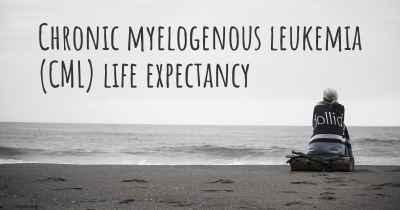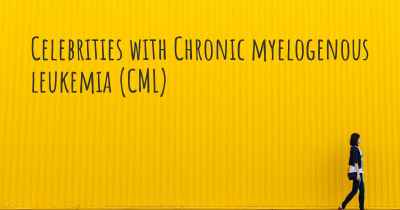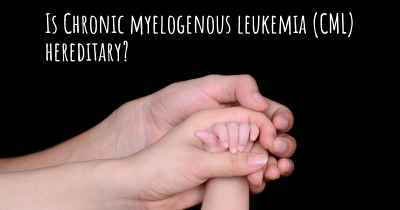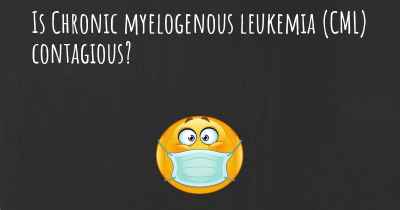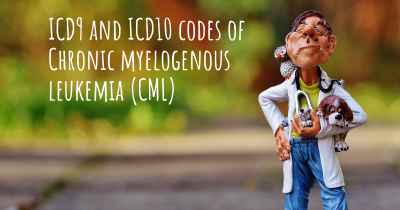How is Chronic myelogenous leukemia (CML) diagnosed?
See how Chronic myelogenous leukemia (CML) is diagnosed. Which specialists are essential to meet, what tests are needed and other useful information for the diagnosis of Chronic myelogenous leukemia (CML)
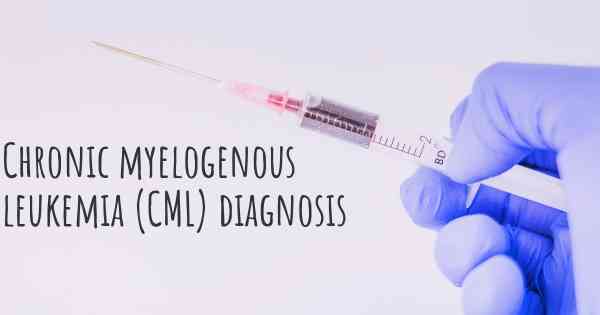
Chronic myelogenous leukemia (CML) is a type of cancer that affects the blood and bone marrow. It is characterized by the uncontrolled growth of abnormal white blood cells called myeloid cells. Diagnosing CML involves a series of tests and examinations to confirm the presence of the disease and determine its stage.
Medical History and Physical Examination
When a patient presents with symptoms that may indicate CML, the first step in the diagnostic process is a thorough medical history and physical examination. The doctor will ask about the patient's symptoms, medical background, and family history of cancer. They will also perform a physical examination to check for any signs of CML, such as an enlarged spleen or liver.
Complete Blood Count (CBC)
A complete blood count (CBC) is a common blood test that provides important information about the different types of blood cells. In CML, the CBC may reveal elevated levels of white blood cells, particularly immature myeloid cells called blasts. The presence of these abnormal cells can be a strong indication of CML.
Peripheral Blood Smear
A peripheral blood smear is another test that can aid in the diagnosis of CML. It involves examining a sample of the patient's blood under a microscope. In CML, the smear may show an increased number of white blood cells, including abnormal forms. The presence of specific genetic abnormalities, such as the Philadelphia chromosome, can also be detected through this test.
Bone Marrow Aspiration and Biopsy
To definitively diagnose CML, a bone marrow aspiration and biopsy are usually performed. These procedures involve extracting a small sample of bone marrow from the hipbone or another large bone. The samples are then examined under a microscope to assess the number, appearance, and genetic characteristics of the cells.
Bone marrow aspiration: A thin needle is used to withdraw a liquid sample of bone marrow. This sample is primarily used for cytogenetic analysis, which helps identify genetic abnormalities associated with CML.
Bone marrow biopsy: A larger needle is used to remove a small piece of bone and bone marrow. This sample is examined for changes in the bone marrow structure and cellularity, as well as the presence of abnormal cells.
Genetic Testing
Genetic testing plays a crucial role in diagnosing CML. The most common genetic abnormality associated with CML is the presence of the Philadelphia chromosome, which is a result of a translocation between chromosomes 9 and 22. This abnormality leads to the formation of a fusion gene called BCR-ABL1, which drives the uncontrolled growth of myeloid cells.
Various techniques, such as fluorescence in situ hybridization (FISH) and polymerase chain reaction (PCR), are used to detect the presence of the Philadelphia chromosome and BCR-ABL1 fusion gene. These tests help confirm the diagnosis of CML and can also monitor the response to treatment.
Other Diagnostic Tests
In addition to the aforementioned tests, other diagnostic procedures may be performed to assess the extent of CML and its impact on other organs. These may include:
- Imaging tests: X-rays, computed tomography (CT) scans, or magnetic resonance imaging (MRI) may be used to examine the organs and detect any abnormalities.
- Flow cytometry: This test analyzes the characteristics of cells, including their size, shape, and the presence of specific markers. It can help differentiate between different types of leukemia.
- Polymerase chain reaction (PCR) for monitoring: After diagnosis, PCR can be used to monitor the response to treatment and detect minimal residual disease (MRD), which refers to the presence of a small number of leukemic cells that may not be detectable by other methods.
Conclusion
Diagnosing chronic myelogenous leukemia (CML) involves a combination of medical history, physical examination, blood tests, bone marrow analysis, and genetic testing. These diagnostic procedures help confirm the presence of CML, determine its stage, and guide the appropriate treatment plan. If you suspect you may have CML or are experiencing symptoms associated with the disease, it is important to consult a healthcare professional for a proper diagnosis and timely intervention.
sample of bone marrow being taken.
Posted Sep 29, 2017 by Steve 2500
